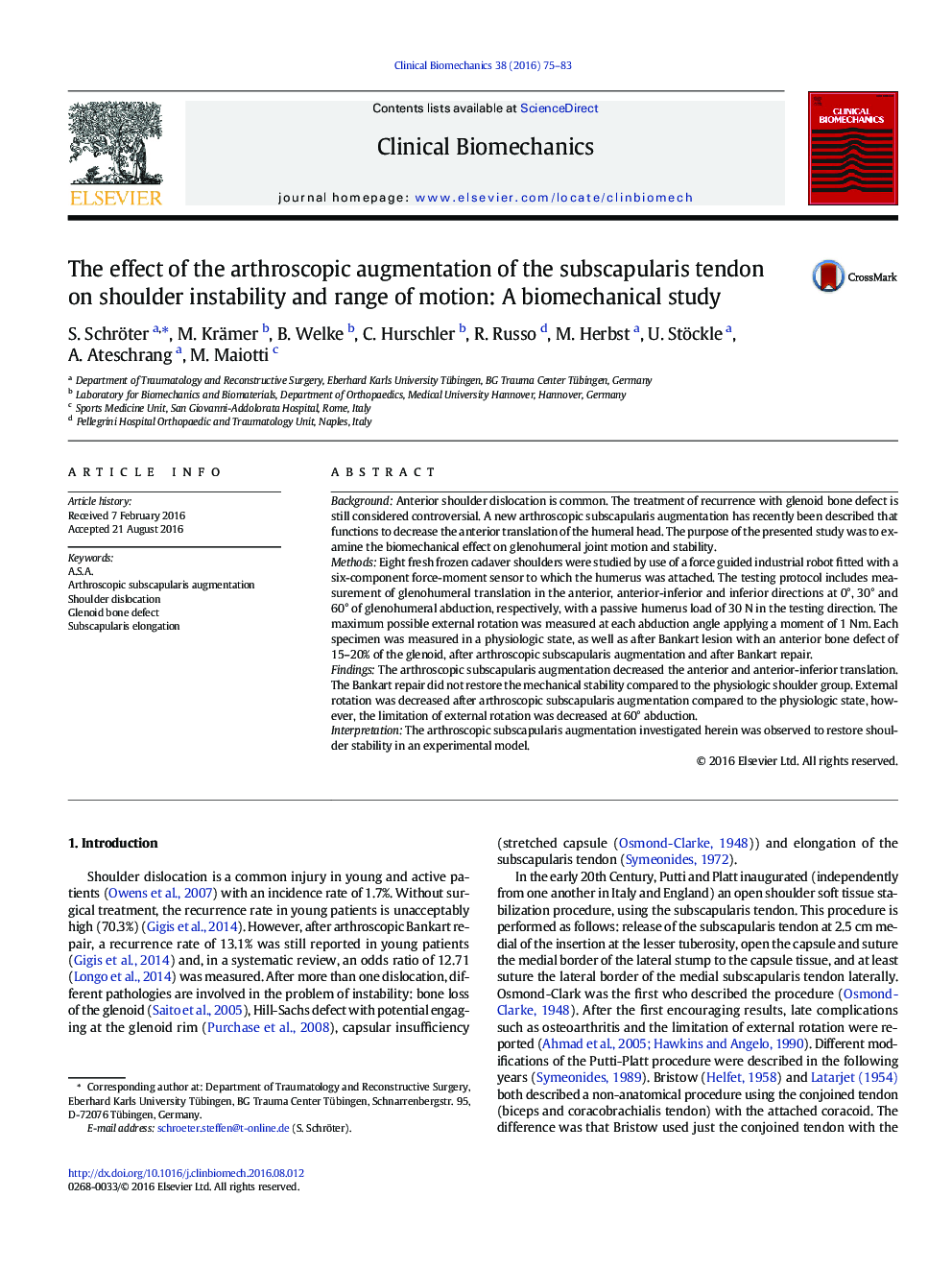| Article ID | Journal | Published Year | Pages | File Type |
|---|---|---|---|---|
| 4050060 | Clinical Biomechanics | 2016 | 9 Pages |
•Bankart lesion combined with the bone defect was performed arthroscopically.•Analyse of motion by use of a force guided robot with a six-component force-moment sensor•Demonstration of the stabilization effect of arthroscopic subscapularis augmentation•Arthroscopic subscapularis augmentation prevent shoulder dislocation
BackgroundAnterior shoulder dislocation is common. The treatment of recurrence with glenoid bone defect is still considered controversial. A new arthroscopic subscapularis augmentation has recently been described that functions to decrease the anterior translation of the humeral head. The purpose of the presented study was to examine the biomechanical effect on glenohumeral joint motion and stability.MethodsEight fresh frozen cadaver shoulders were studied by use of a force guided industrial robot fitted with a six-component force-moment sensor to which the humerus was attached. The testing protocol includes measurement of glenohumeral translation in the anterior, anterior-inferior and inferior directions at 0°, 30° and 60° of glenohumeral abduction, respectively, with a passive humerus load of 30 N in the testing direction. The maximum possible external rotation was measured at each abduction angle applying a moment of 1 Nm. Each specimen was measured in a physiologic state, as well as after Bankart lesion with an anterior bone defect of 15–20% of the glenoid, after arthroscopic subscapularis augmentation and after Bankart repair.FindingsThe arthroscopic subscapularis augmentation decreased the anterior and anterior-inferior translation. The Bankart repair did not restore the mechanical stability compared to the physiologic shoulder group. External rotation was decreased after arthroscopic subscapularis augmentation compared to the physiologic state, however, the limitation of external rotation was decreased at 60° abduction.InterpretationThe arthroscopic subscapularis augmentation investigated herein was observed to restore shoulder stability in an experimental model.
